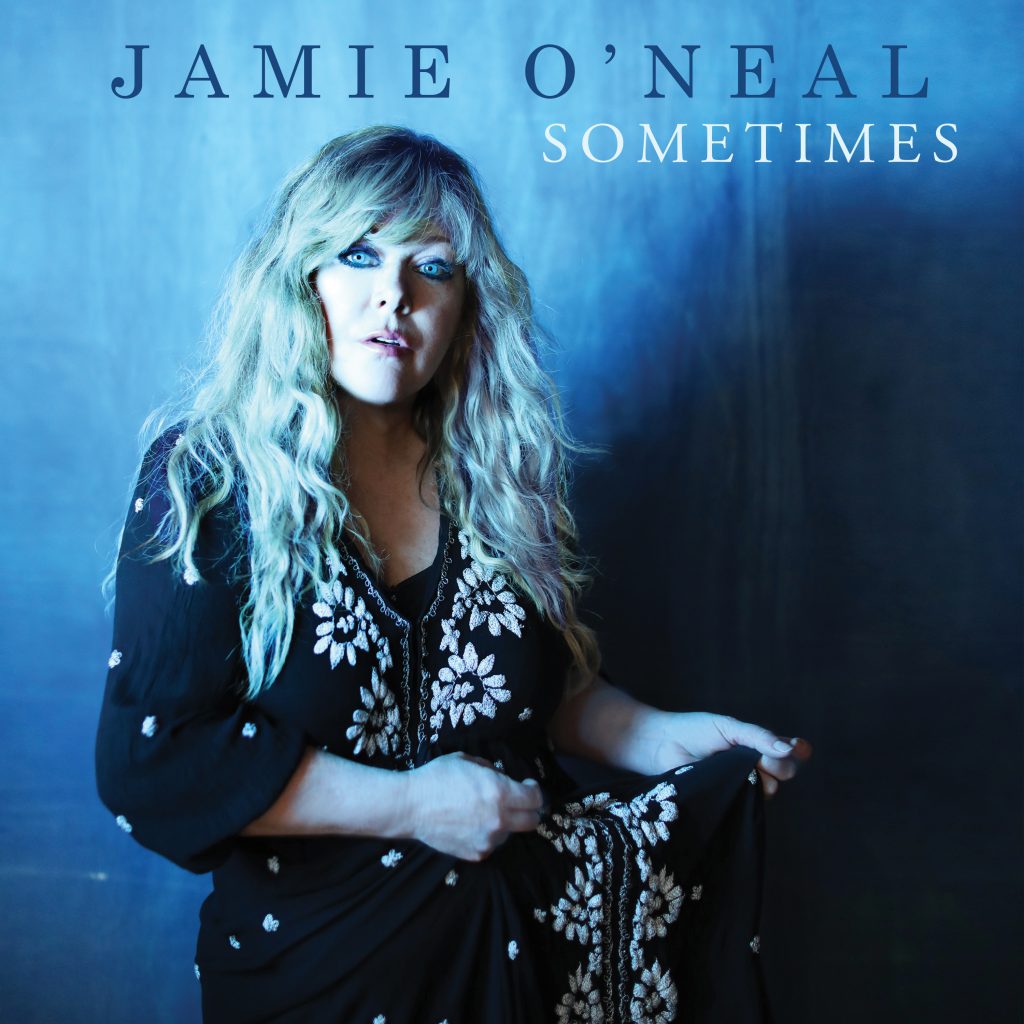Female Friday: Jamie O’Neal
O'Neal has some great advice for new artists.

Throughout the early 2000s, Jamie O’Neal was atop the country music world with a collection of chart-topping singles including “There Is No Arizona,” “Somebody’s Hero” and “Trying to Find Atlantis,” among others. The Australian born singer reimagines these nostalgic numbers, alongside several new, original tracks, on her album Sometimes, serving as her first studio project since 2014. But O’Neal didn’t head into the studio alone, making it a cross-generational experience by inviting longtime peers and friends Martina McBride and Sara Evans to sing with her, along with modern star Lauren Alaina.
In this edition of Female Friday, O’Neal reflects on the new album, what it meant to record one of her biggest hits with her teenage daughter and why it’s important for young artists to establish their own identity.

This is your first record in six years. What inspired you to get back into the studio and record this material?
Last year, I was doing the ACM [Awards] and they paired past winners with some newer artists, and so I was paired with Lauren Alaina, which I actually asked for her because I think she’s amazing. We got to sing “[There Is No] Arizona” together and then after that gave me the idea of ‘what if I re-recorded some of my hits with some other females who I love?’ and it started off with Lauren Alaina and she said she would do it. In that time, we started cutting some original songs that I’d been writing for the album because I thought half originals and then half my hits. But then I kept writing and coming up with more new songs, and so it ended up being eight new songs and four of the hits versus a half and half.
It’s definitely more original than it is remakes, but I was able to get two friends, Sara Evans, Martina McBride. Having those amazing singers, those iconic voices that are very recognizable, you’re not going to go ‘who’s that?’ when you hear it, you know who it is. That to me is the goal of anyone who’s trying to make it in this business is to have that voice that when it comes on the radio, you know exactly who it is. You don’t have to question for a second because they’re so distinctive and that’s Martina and Sara and Lauren as well. I think Lauren is really a great singer.
What was it like putting together a new record after six years? How was it different than the previous projects you’ve done and how do you feel like you’ve grown through this process?
I really wanted to wait until my daughter was old enough that she didn’t need me so much. I really focused on being a mom for so long and raising her. But now that she’s 17, she definitely doesn’t need me as much. She’s actually singing on “Somebody’s Hero” with me, which was incredibly moving for me. She was two when she was in the video for the song and of course she doesn’t remember that, but being able to be so grown up that she’s singing it with me and bringing more of an emotional aspect to the song for me, because it’s no longer about singing about just my mom and my grandmothers and my stepmom. It’s now to me singing about this little girl and watching her grow up like it talks about in the song, because even though I was talking about it in the song, she was a baby. So now that I’ve been through these different stages of her life, it means even more to me than it did back then.
Take me inside your head space as you were creating these songs. Is there one that you felt most vulnerable or honest writing or recording?
I think there’s a little bit of that in a lot of the songs. I wouldn’t say necessarily vulnerable, but “Someone’s Sometimes,” which is my favorite song on the album and I do it with John Paul White, that song is the most vulnerable in a way because I can relate totally having dated guys like this, where they’re playing that cat and mouse game ‘I want you to, I don’t, I want you, I don’t.’ It takes your self worth for a trip, it takes it down and it makes you question. Even if you say ‘he’s going to make it up to me this weekend and he said he’s so sorry and he’s going to take me here, he’s going to take me there,’ and then he doesn’t do it, especially if you’ve told your girlfriends because you’re trying to convince them that he’s a good guy, you’re trying to convince yourself that he’s a good guy, and you’re trying to explain away the reasons that he let you down again. That’s what the song was written from that perspective, a female perspective. But then when John Paul White was like, when I sang the second verse he said, ‘I think that takes it to a different side, which is intriguing where the guys can go through that too and guys can say the same thing.’ And he’s like, ‘this is a guy’s perspective of it happening to him as well as the female perspective.’ That really took the song to a different place and it was unexpected for me and really works well because I think then guys can relate to it too, because guys go through that as well.
What was it like to revisit “There Is No Arizona,” “When I Think About Angels” and “Somebody’s Hero”?
I sing them every night, so it’s not really like revisiting them. For me, it’s like they’re home, they’re woven into the tapestry of my life 24/7. But as far as the recordings go, it was wanting to stay true to the songs and not be crazy or make them too different, but at the same time, give them a new energy and take them somewhere maybe that people weren’t expecting, like having a duet with Martina or Lauren Alaina or something like that. There are different aspects to the tracks; we didn’t want to copy the record exactly. I feel like “Somebody’s Hero” really turned out different than the original and even “Trying to Find Atlantis” is more rockin’. It’s not as rootsy, it’s more rockin’ than the original.
What do people like Lauren Alaina, Sara Evans and Martina McBride bring to these songs to give them that new energy?
I think their unique voices and their perspective on the songs, because with Sara and Martina, they knew the songs they were singing on. With Lauren, she would have been so young when “Arizona” was a hit that I don’t even know if she knew the original. She loves the song though and she was excited to record it, which was really sweet. I love the fact that we’re adlibbing so much and even with Sara, we did some adlibs that aren’t on the original, and Martina too. We did things a little bit differently and all those girls are so good at responding in the moment to the song and doing adlibs because some singers can’t sing an adlib, they’re like ‘I’m not really good at that. I’d rather know what I’m going to do when I go in the studio,’ but not with those girls. They’re all coming up with it on the fly.
View this post on InstagramA post shared by Jamie O'Neal (@jamieonealofficial) on
How do you feel like you’re contributing to the modern landscape of country music?
I did an interview the other day and someone said ‘I find your voice so comforting for some reason,’ because when you’re used to hearing someone’s voice and then you maybe have a break from it, when you hear it again, it’s kind of like…For me, I feel that with Sting, I love Sting, so every time he puts out an album, I’m going to buy it, but it’s like his voice just washes over you. It is a feeling of ‘there’s that voice again,’ and I feel that way about John Paul White too. I would recognize his voice instantly and go ‘that’s John Paul White.’ That’s what I want someone to do with my voice. I want them to go ‘is that Jamie O’Neal?’ That’s what makes me feel happy is that I have a recognizable sound that doesn’t sound like anybody else and then no matter what I’m singing, I’m going to make it my own. I’m not going to try to be like someone else.
What are some of the biggest lessons you’ve learned and what advice do you have for this new generation of country artists?
What advice I have is to not copy anyone else. I worked with younger artists that are always saying, but Taylor [Swift] does dot, dot, dot. But Carrie [Underwood] does dot, dot, dot. Well, they already have done that and nobody told them who to be and nobody told them how to be. You have to figure out how to be the best version of yourself. You don’t have to figure out how to copy someone or how to take the steps that they took or how to play the guitar that they played or wear the boots that they wore. That’s not what being an artist is about, that’s a karaoke cover band type of mentality. So my advice is always no one told them how to be, don’t let anyone tell you how to be. You’ve got to figure out how to be the best version of yourself.


